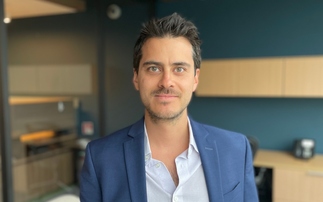Carpet maker Interface is creating a new vision for how industry can operate in line with the UN Sustainable Development Goal for sustainable infrastructure and innovation
At Interface, factories aren't simply factories: they're potential forests.
Okay, they don't mean that entirely literally. Forests, unlike Interface factories, can't produce carpet tiles. On the other hand, the natural world is very good at regulating the climate, providing natural ventilation, and even communicating with itself - a subterranean social network of fungi and roots known as the "Wood Wide Web".
It is these natural qualities that Interface wants to incorporate into its operations, creating a new vision of industry that's in line with Sustainable Development Goal 9 and its targets for delivering sustainable industry, infrastructure, and innovation.
"The big plan is to rethink our factories," explains Jon Khoo, an innovation partner at Interface. "Instead of being things that cause problems - pumping out carbon, using a lot of energy, wasting a lot of water - we want to see if they can behave a little more like forests. We look at the local ecosystem and we'll say: 'Well this ecosystem has got 3.8 billion years of experience and seems to be working very efficiently. What can we use as a reference point? What can we learn from it to adapt our factories to work better?'"
Since 2015 the company has been working with the Biomimicry Institute on pilot projects in the US and Australia to try and turn this vision into a reality. The initial research carried out by the Institute aimed at establishing a process for setting quantitative goals to "mimic ecosystem services", according to a report from the group.
The approach meant asking questions around the unique roles played by different native landscapes, from fresh water production to climate regulation, soil formation, and cultural heritage, and considering how to set ecological performance standards to measure these processes and outputs in a way that would be relevant to factories.
The team studied a specific Interface manufacturing facility in Australia and researched the relevant ecosystem for the area, a river flat eucalypt forest on coastal floodplains, figuring out the key services performed by the habitat, and how these could be integrated into a factory.
The work resulted in a three-step process to establish ecological performance metrics specific to where the factory is based. The next phase of the project, which will run into the 2020s, involves determining quantifiable metrics and assembling a design team to integrate the findings into the factories. It could involve, for instance, using IT in novel ways to imitate the 'Wood Wide Web'.
"It's a bit out there, and it's new, and I don't have any concrete examples where I can say 'Factories as Forest' has led us to revolutionize how we ventilate - that's probably a couple of years down the line," admits Khoo. "But that's the kind of blue sky thinking we're having around SDG9, rethinking what a factory does and all the impacts, and how you can contribute as a factory to the SDGs a positive force, rather than doing less bad."
Khoo says that he has also been inspired by Thermosmart, a team based in Mexico City that has researched how animals' circulatory systems can inspire a more sustainable solution to heating and cooling buildings. "The circulation of liquid - blood - through a network of pipes - veins and arteries - has proven to be an excellent way to distribute heat quickly and efficiently throughout the body," wrote the team behind the idea. "This has inspired us to create a smarter heat management system that can harvest, transfer, and release heat throughout a building where and when it is needed with minimal waste."
As a company that's been thinking about sustainability for more than two decades, for Interface the SDGs have been less about prompting new action and more about using the targets and indicators to calibrate and measure existing actions, and, on occasion, returning to their archives to seek out ideas past that could help them today and in the future.
"The urgency of the effects of climate change, and the world becoming more carbon sophisticated and talking more around measuring and understanding embodied carbon, was the catalyst to us investing more in our R&D guys," says Khoo.
For instance, in line with its goal of becoming carbon negative by 2040, Interface is looking at ways to create carpet tiles and backings that sequester emissions. It is an innovation that could contribute to SDG 9.4, the target which calls for industries to retrofit to become more sustainable by 2030 through increased resource-use efficiency and greater adoption of clean and environmentally sound technologies.
In 2017, the company released Proof Positive, a concept carpet tile made of plant-based materials. While the typical carpet tile will emit seven kilos of CO2 per square metre, this invention will lock in two kilos. It plans to release a commercially viable version within the next 12 to 18 months. The next step will be to release a carbon negative backing.
It is easy to complicate the challenge of meeting SDG9. To get too wrapped up in the knotty engineering and architectural details of the manmade world, in a bid to replicate the harmonious balance nature strikes so effortlessly. But if imitation is the sincerest form of flattery, perhaps the secret to truly sustainable infrastructure has been right in front of us all along.









